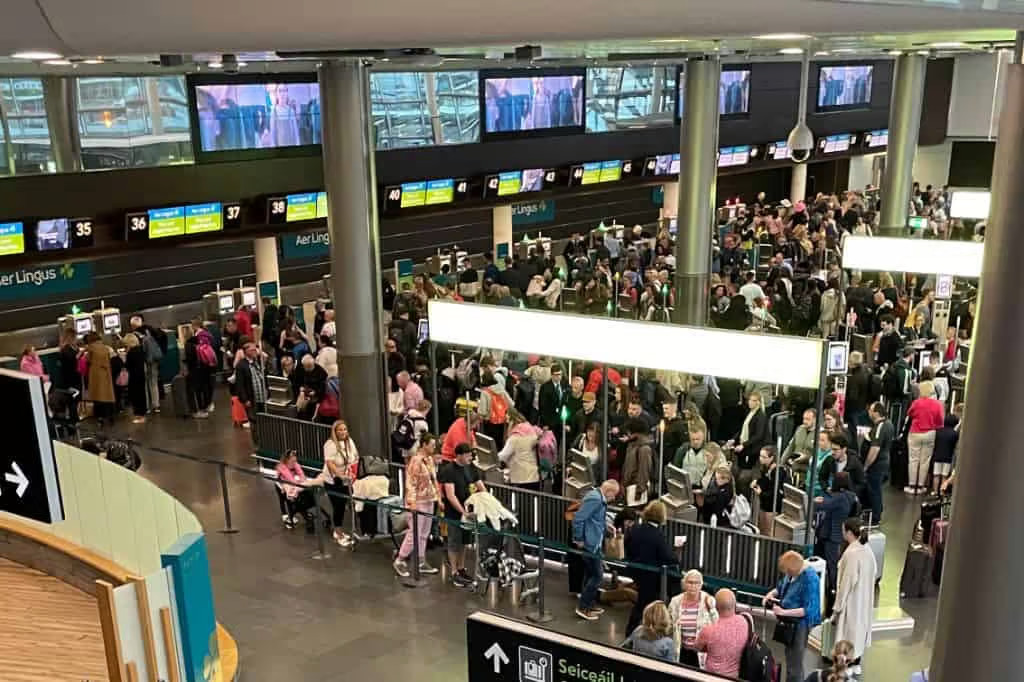Flying through Dublin Airport this winter? With the passenger cap in place, things could get a bit overwhelming, especially during the busy holiday season. But don’t worry, I’ve got ten Dublin Airport travel tips that’ll help you navigate both landside and airside smoothly—and maybe even enjoy the experience. These pointers aren’t just for winter; they’ll help you stay cool year-round, no matter what airport you’re flying through. So, here’s how to survive Dublin Airport without pulling your hair out!
- Avoid peak travel dates
Why: The passenger cap and reduced seat availability mean flights during peak periods, like weekends and around holidays, are more likely to be crowded and expensive.
What to Do: If possible, try to fly on off-peak days like Tuesdays or Wednesdays and avoid flying around major holidays such as Christmas and New Year’s Eve when demand is highest. This can help you secure a flight and avoid crowds.
- Check airline change policies
Why: With the cap limiting capacity and increasing the chance of flight changes or cancellations, it’s wise to understand the change and cancellation policies of the airline you book with. Some airlines offer more flexibility than others, and these can be critical if flights are rescheduled due to the cap.
What to Do: Before booking, review the airline’s change policies, particularly for tickets booked during high-demand periods. Consider airlines with flexible change policies, which can offer peace of mind during this period of uncertainty.
- Consider travel insurance
Why: Given the uncertainty around the passenger cap and possible flight changes or cancellations, travel insurance can provide coverage for unexpected issues, such as missed flights, delays, or cancellations.
What to Do: When booking flights, check if the insurance policy covers disruptions due to changes imposed by regulations or capacity limits. Some credit cards also offer travel insurance, so you may want to check if your card provides coverage when booking.
- Check in early and use online tools
Why: Flights may be overbooked due to reduced seat availability. Checking in early, either online or in person, can reduce the risk of being bumped off a flight.
What to Do: Use your airline’s app to check in online as soon as it opens (usually 24 to 48 hours before the flight). This can also help secure better seating and ensure you’re prepared for any last-minute notifications about changes.
- Be flexible with airports
Why: Dublin Airport is facing significant seat restrictions, so regional airports like Cork and Shannon may offer more availability and potentially cheaper flights.
What to Do: When searching for flights, expand your search to include Ireland’s regional airports, which may offer better options for both price and availability during the winter cap period.
- Plan for longer security lines
Why: The passenger cap doesn’t mean the airport will be less crowded at all times. Peak periods like holidays could still result in long lines at security and check-in.
What to Do: Arrive earlier than usual, particularly during peak travel times, to avoid missing flights due to delays at security. Consider using Dublin Airport’s Fast Track option for quicker passage through security. This is probably the most important of my Dublin Airport travel tips – I probably should have put it first, to be honest.
- Keep an eye on real-time updates
Why: With flight schedules potentially changing, it’s essential to stay informed about your flight status.
What to Do: Use apps like FlightAware or your airline’s app to receive real-time updates on flight status, gate changes, and delays. The DAA app is also great to let you know how long it is currently taking to clear security. This is especially important if airlines adjust schedules to accommodate the passenger cap.
- Reduce stress with pre-booked parking or transport
Why: With more passengers fighting for fewer flights, congestion around Dublin Airport may increase, particularly on peak travel days.
What to Do: Pre-book airport parking to guarantee a space, or consider using public transport or taxi services to avoid traffic and parking delays.
- Choose early morning or late night flights
Why: Early morning and late-night flights are typically less affected by delays, and the airport is generally less crowded during these times. With fewer passengers travelling during these off-peak hours, security lines and check-in processes tend to be quicker, making your journey smoother.
What to Do: When booking your flight, try to select flights that depart early in the morning (before 8 a.m.) or later in the evening (after 8 p.m.) to avoid peak airport congestion. These flights are also less likely to be impacted by delays from earlier flights in the day.
- Pack light to avoid checked baggage delays
Why: With the cap limiting capacity and higher passenger volume during the holiday season, baggage handling services may experience delays, especially during peak travel times. Carrying only a cabin bag allows you to bypass baggage claim and reduces your wait time upon arrival.
What to Do: Travel with only carry-on luggage to avoid potential delays with checked bags. Ensure your cabin bag meets airline size requirements, and pack efficiently to speed up security checks.

